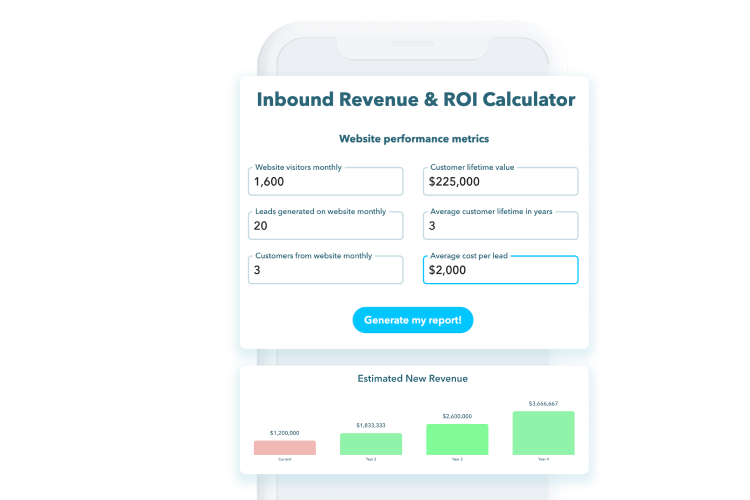 1,019 views
1,019 views 2419 Views
2419 Views  5 min read
5 min readWhether you’re an established Healthcare Technology company or a startup stepping into the industry, you need a proper healthcare software marketing plan to attract website visitors and convert them into leads. It involves identifying the target audience and then implementing the most effective strategy for reaching them. These days marketing pros need a wide range of skills including strategy development, content writing, email marketing, social media marketing, and search engine optimization to name a few.
Before you embark on marketing your product or services, you need to know who exactly you are targeting, what their needs are and what kind of message will resonate with them. Therefore, the first step in your healthcare software marketing plan should be to define your Buyer Personas (fictional characters that mirror your ideal customers). For instance, the people who might be interested in buying your product or service could be ‘Health Services Manager Mary‘, ‘Private Practice Owner Otis ‘, or ‘Physician Philip‘. Each of these buyers has different responsibilities, goals and challenges. Defining each Buyer Personas will enable you to create content that will appeal to them.
After creating your Buyer Personas, take time to understand how they think and what would motivate them to make a purchasing decision. Interview customers that fit your Buyer Persona profiles, and ask them what challenges, goals, responsibilities, and questions they had leading up to buying your solution. According to HubSpot, the Buyer’s Journey has three stages: Awareness, Consideration and Decision. Understanding the stages of your Buyer Personas will help you create focused content that is relevant to their needs.
Decide what exactly you want to accomplish with your healthcare software marketing plan and when you want to see a return on investment (ROI). Make sure your goals are specific, measurable, attainable, relevant and timely. Some of the key performance indicators (KPIs) you could have include:
There are numerous ROI measuring tools that can make your work much more simple. Most notably, Hubspot provides the best analytics across the board, in one platform.
Inbound marketing requires a wide range of skills including copywriting, blogging, web design, web analytics, email marketing, search engine optimization, social media management and conversion rate optimization. If you don’t have all these skills in-house, it would be advisable to outsource some tasks to Inbound experts. This can cost a company between $150K a year by hiring freelancers managed by marketing personnel, or over $350K a year hiring employees needed in-house. Working with a specialized Inbound Partner, like Responsify will likely save you over 50% then do-it-yourself (DIY) methods, and ensure you get the strategy and resources you need to make Inbound Marketing successful for your company.
Since the visitors of your website are at different stages of the Buyer’s Journey, you need to craft a different content strategy for each stage. Here are the stages:
Leads often fail to make a purchasing decision due to lack of information. One of the best ways of keeping your leads informed is through a series of automated Lead Nurturing Emails. According to a study by Email Monday, more than 70% of companies achieve their highest ROI from Email Marketing. There are many ways of growing your email list. First, display an opt-in form prominently on your website’s homepage or as a popup. Offer a giveaway such as an eBook where people are required to submit their name and email address before downloading. Social media contents and webinars are also great options for building email list that you could explore.
Your blog is a crucial element of the overall healthcare software marketing plan. Optimizing your blog content is a great way of building trust with your audience, boosting your search engine ranking and driving more traffic to your site. Write long-form content (typically more than 750 words, even better if 2000+ words) for a better search engine ranking. Don’t forget other kinds of interactive content such as Podcasts, Videos, Infographics, Surveys and Polls. Use as many visuals as possible to grab the attention of your audience. Since many people will access your blog using their mobile devices, make sure your website’s layout is fully responsive.
A collection of research presented by Business 2 Community has shown that many people find information about businesses through social media. Having an effective social media strategy allows you to engage followers with your content, thus enhancing chances of converting them to leads or buyers. Be sure to have specific objectives for each social media post. This could be generating more shares and likes. Share great content that addresses the problems of your audience. This could be photos, curated content, social videos and even your blog articles. Don’t forget to share, like and comment on your followers’ posts.
All of the tips above for creating a healthcare software marketing plan are an outline of the Attraction and Conversion stages of a novel marketing methodology called Inbound Marketing. Inbound stresses the importance of creating educational content for your website visitors that will convert them to qualified leads. Your Healthcare Technology company can utilize Inbound to attract new visitors to your website, convert them into leads, and nurture these leads into loyal customers. It can be very challenging to do all of this alone. We here at Responsify partner with health technology marketers to offer strategy, support, and help implementing these activities. By collaborating we help marketers strategically attract new website visitors, convert them to qualified leads and happy customers. We’ve helped countless marketing pros outline and implement healthcare software marketing plan. Feel free to reserve a free strategy session now to help you evaluate your assets and get valuable insights and suggestions to help guide you in the right direction.
